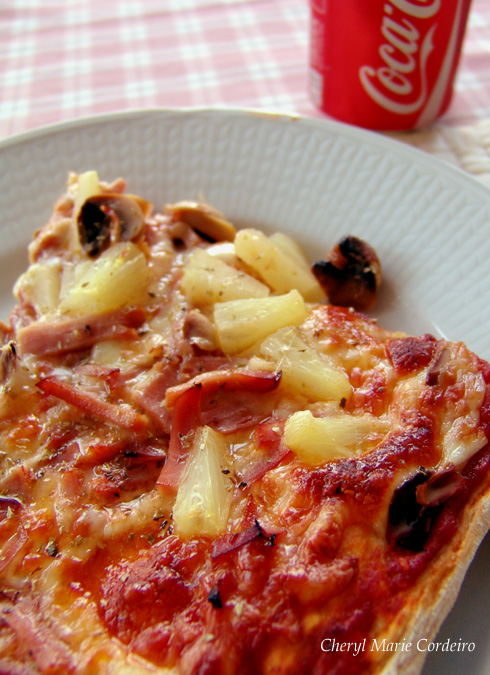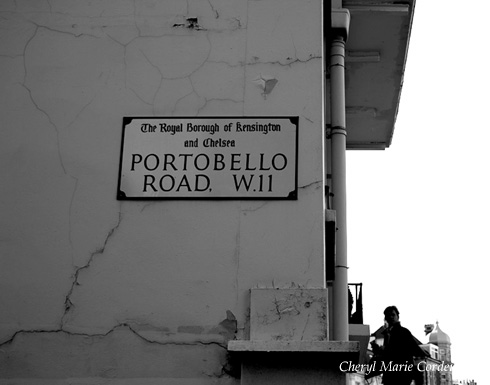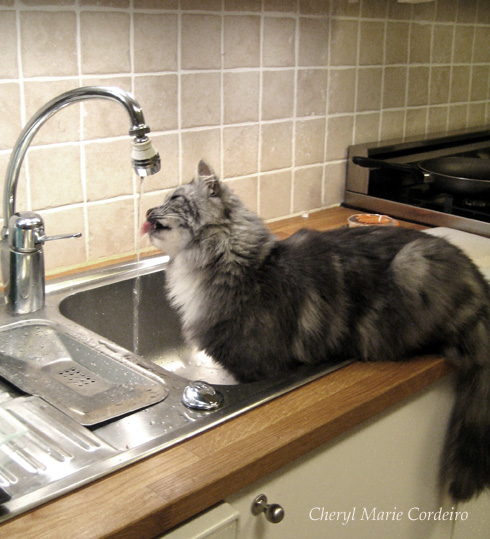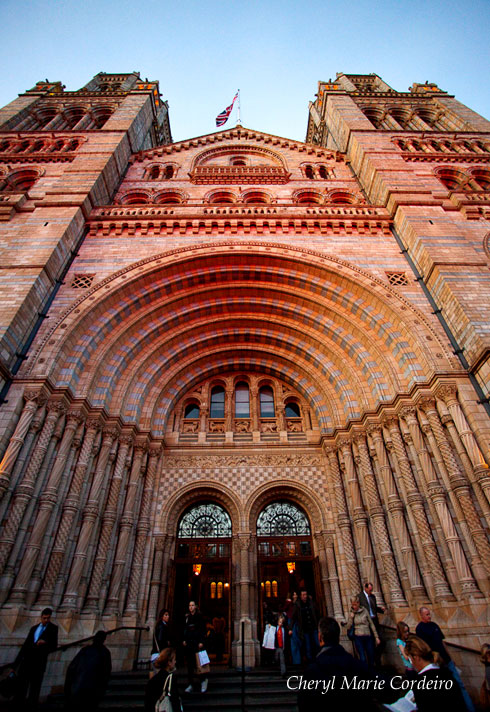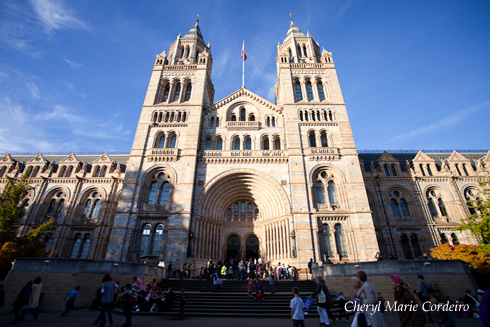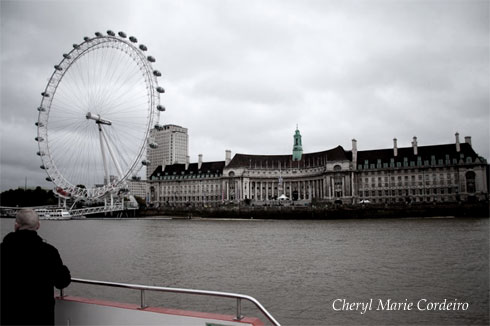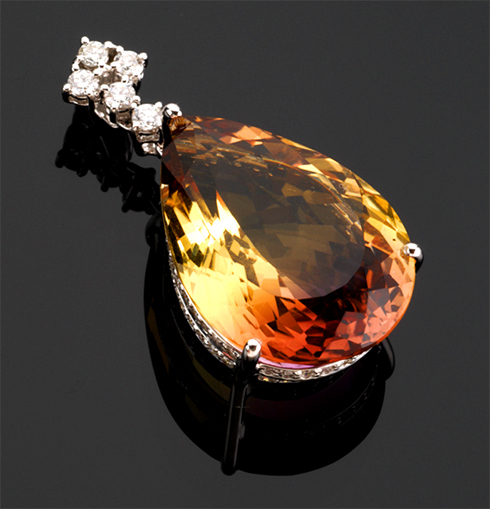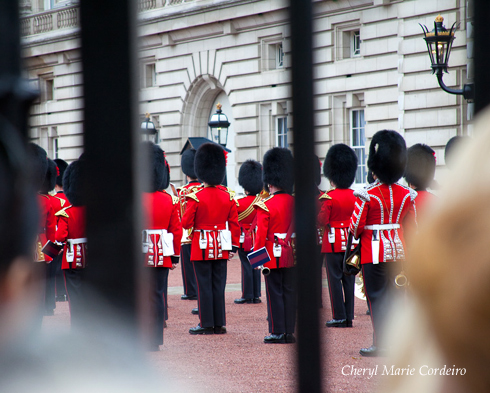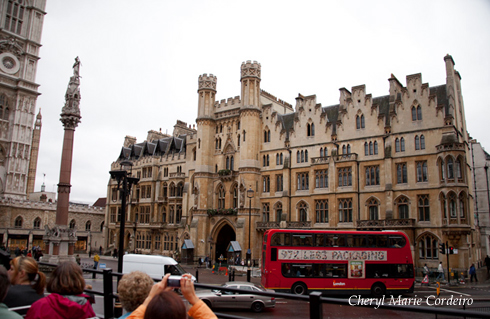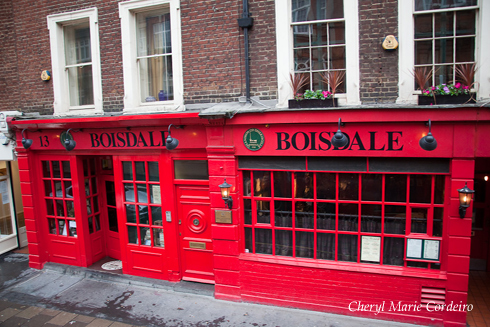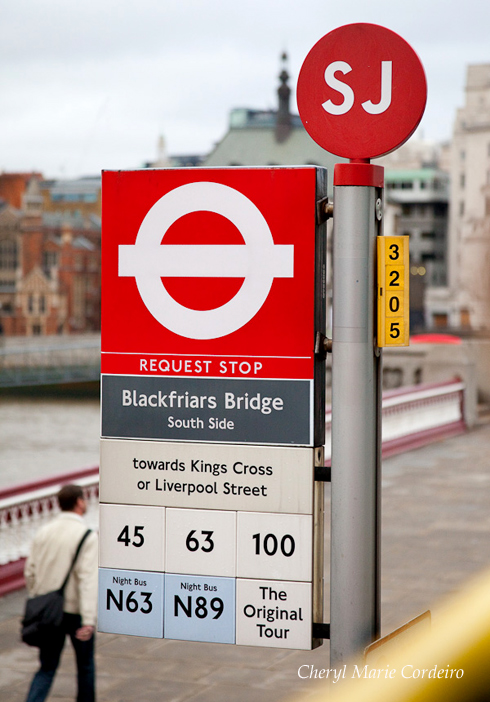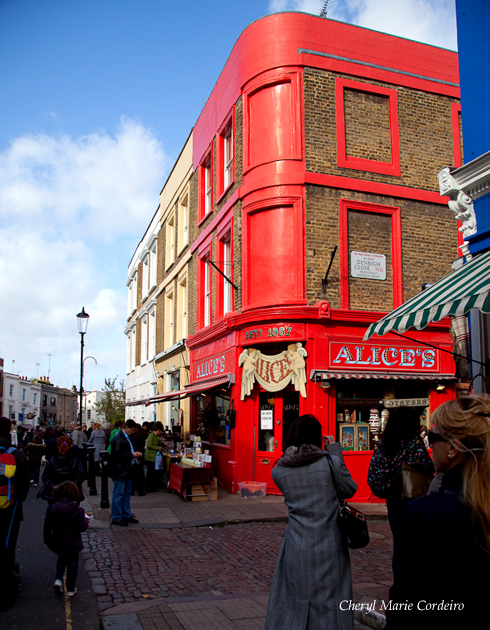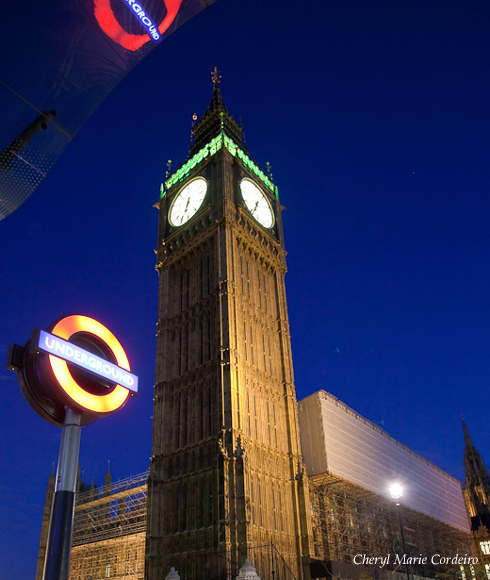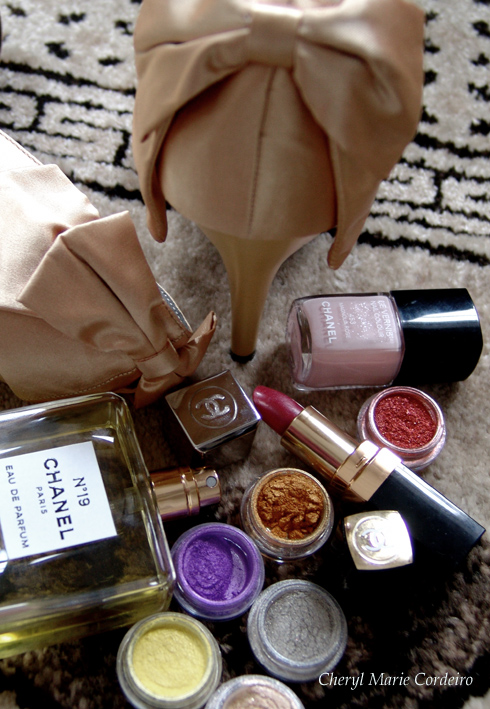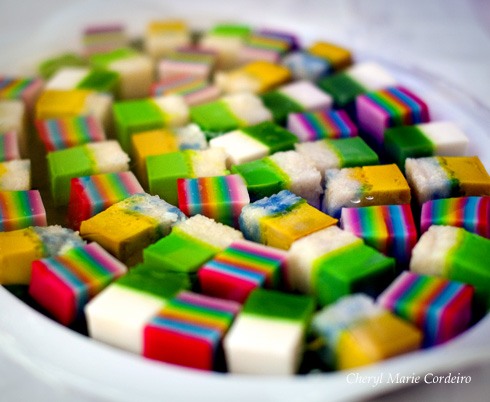
Various Nonya kueh kueh.
Photo for CMC © Kevin D. Cordeiro 2009
As a child, I’ve always looked forward to going to the wet market on Sundays in Singapore. The walk to the market was pleasant, where we would often meet neighbours who were themselves either on the way to the market or back. A curious gift I often received from a very old lady back then whenever she saw me, was a piece of ginger.
A hawker center is often connected to the wet market, providing a convenient place to both eat and market. And before buying the week’s groceries, it was breakfast, where I found that the colourful bit of kueh lapis usually sold at Nonya stalls, never failed to attract my attention. Most of all, I enjoyed peeling off its tapioca layers one by one, eating it according to colour.
Continue reading “Kueh lapis”
